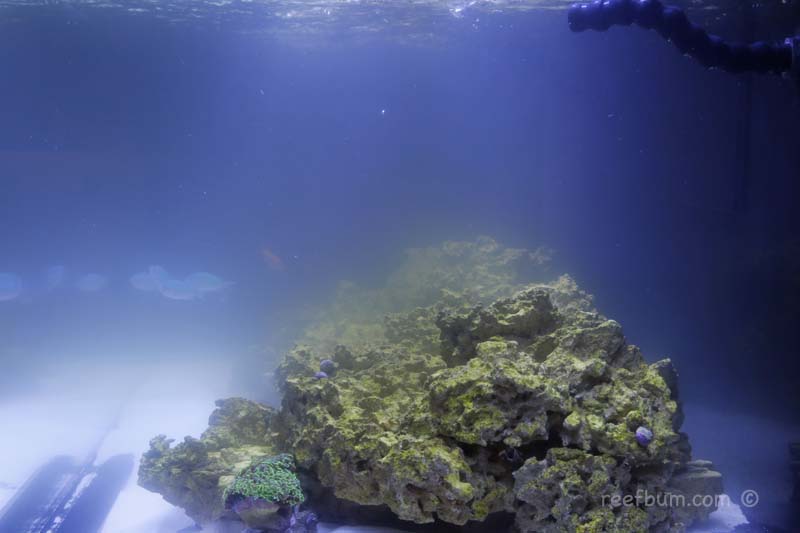
Why is your tank water cloudy and how can you fix it? This question often pops up in our discussion forums and there’s no one-size-fits-all answer. However, pinpointing the cause is the first step towards clarity—literally and figuratively. Here’s what you should consider:
- Age of the Aquarium: New tanks have different challenges compared to more established setups.
- Onset of Cloudiness: Did the cloudiness appear suddenly or has it been gradual?
- Timing of Notice: When and what time of day did you first notice the cloudiness? Water chemistry can fluctuate between day and night.
- Recent Changes: Have you added or removed anything from the tank? Have there been any deaths or illnesses in the tank?
- Maintenance: When was your last water change and how much water was replaced?
If you’re seeking advice, you’ll also need to provide details about:
- Tank size
- Type of filtration system
- Amount of live rock and/or sand
- Type of sand
- Water chemistry parameters (pH, nitrate, nitrite, phosphate, temperature, alkalinity, total dissolved solids)
- Any additives (like limewater)
- Water flow within the aquarium

Common Causes of Cloudy Aquarium Water and Their Solutions
1. Precipitation: Calcium carbonate precipitation could be clouding your water. This might happen due to excessive calcium, a pH spike, or insufficient magnesium—often related to temperature changes affecting your heater. To tackle this, consider your recent actions. Overdosed limewater? Hold off on adding more. High pH? Try to lower it gently. Detailed information can be found in Dr. Randy Holmes-Farley’s articles or directly from him in a reef chemistry forum.
2. Sand Issues: Newly added sand or creatures that stir up the sand bed can cloud your water. Adjusting the flow or powerheads to prevent direct hits on the sand bed usually lets the sand settle naturally. Alternatively, a fine micron filter can clear the water faster but isn’t always necessary.
3. Microbubbles: If your tank looks like a fizzy drink, it could be due to improper skimmer adjustment, turbulent water flow, or leaks in the plumbing drawing air. Slowing down the water flow through the sump or rearranging the skimmer may help. Adding baffles to the sump can also allow more time for bubbles to dissipate.
4. Bacterial or Algae Bloom: Common in new tanks or after adding new life to your setup, this “bloom” occurs when bacteria levels spike to cope with increased waste. While this might cloud the water, it’s usually temporary. A UV filter can help clear the water without harming beneficial bacteria.
5. Spawning: Less common, but spawning can turn your tank milky white. If your tank clouds due to spawning, immediate water changes are essential to remove any organic waste that could worsen water quality. Monitoring and possibly collecting eggs might also be an option if you’re ready for a breeding challenge.
When in Doubt, Observe and Adjust Slowly
Understanding your tank’s unique ecosystem is crucial. Simple measures like adjusting a skimmer or conducting a water change can make a significant difference. For emergencies or if you’re unsure, our Tank Emergency forum is a resource for rapid advice.
Cloudy water can be a sign of a perfectly natural process in your reef aquarium. Often, the best approach is patient observation. However, for every action you take, consider the broader impacts on your tank’s chemistry and inhabitants. Sometimes, less is more when maintaining the delicate balance of a saltwater aquarium. If you ever find yourself stuck, remember that the community and experts are always here to help guide you through any aquatic quandary!




